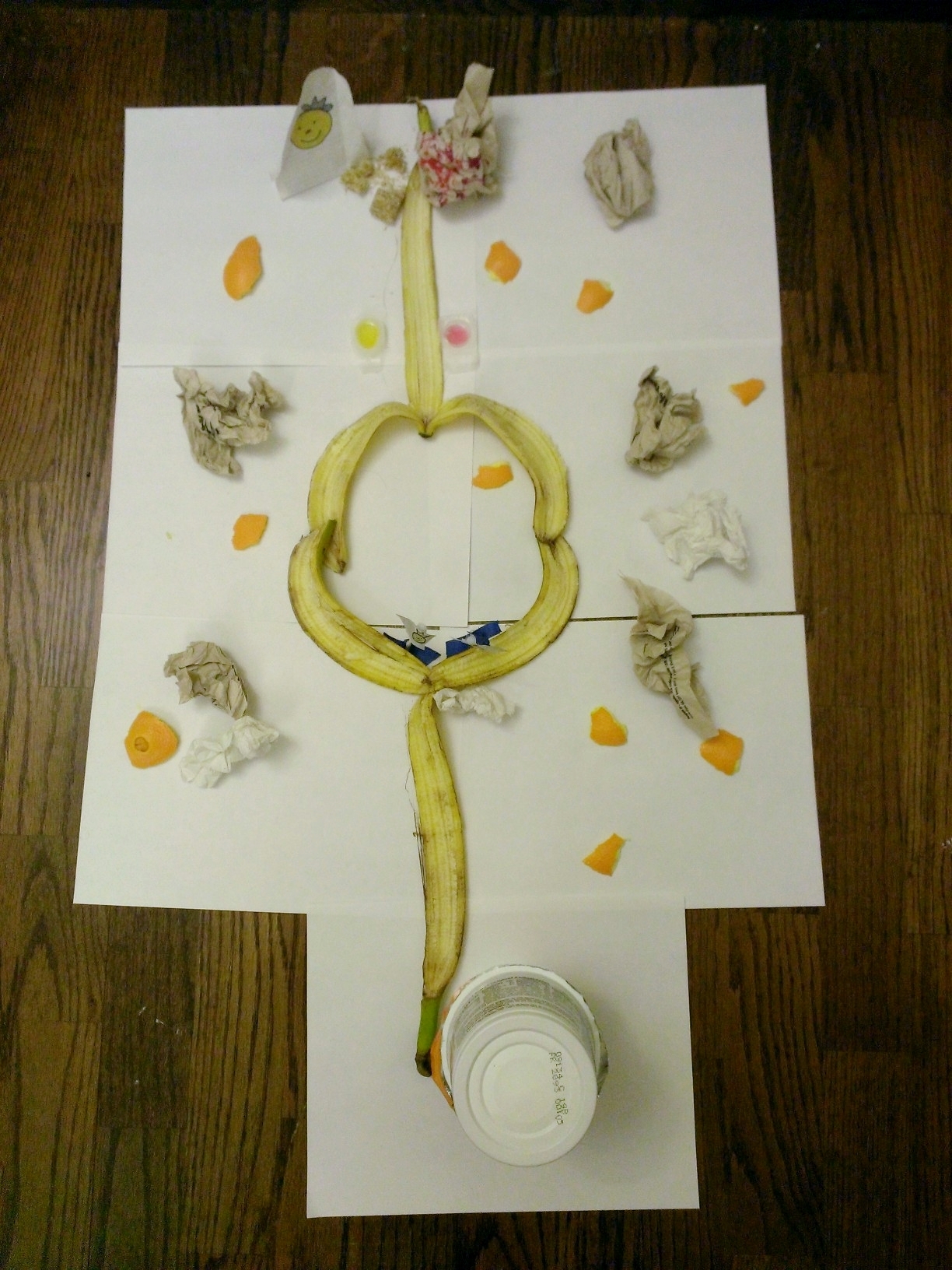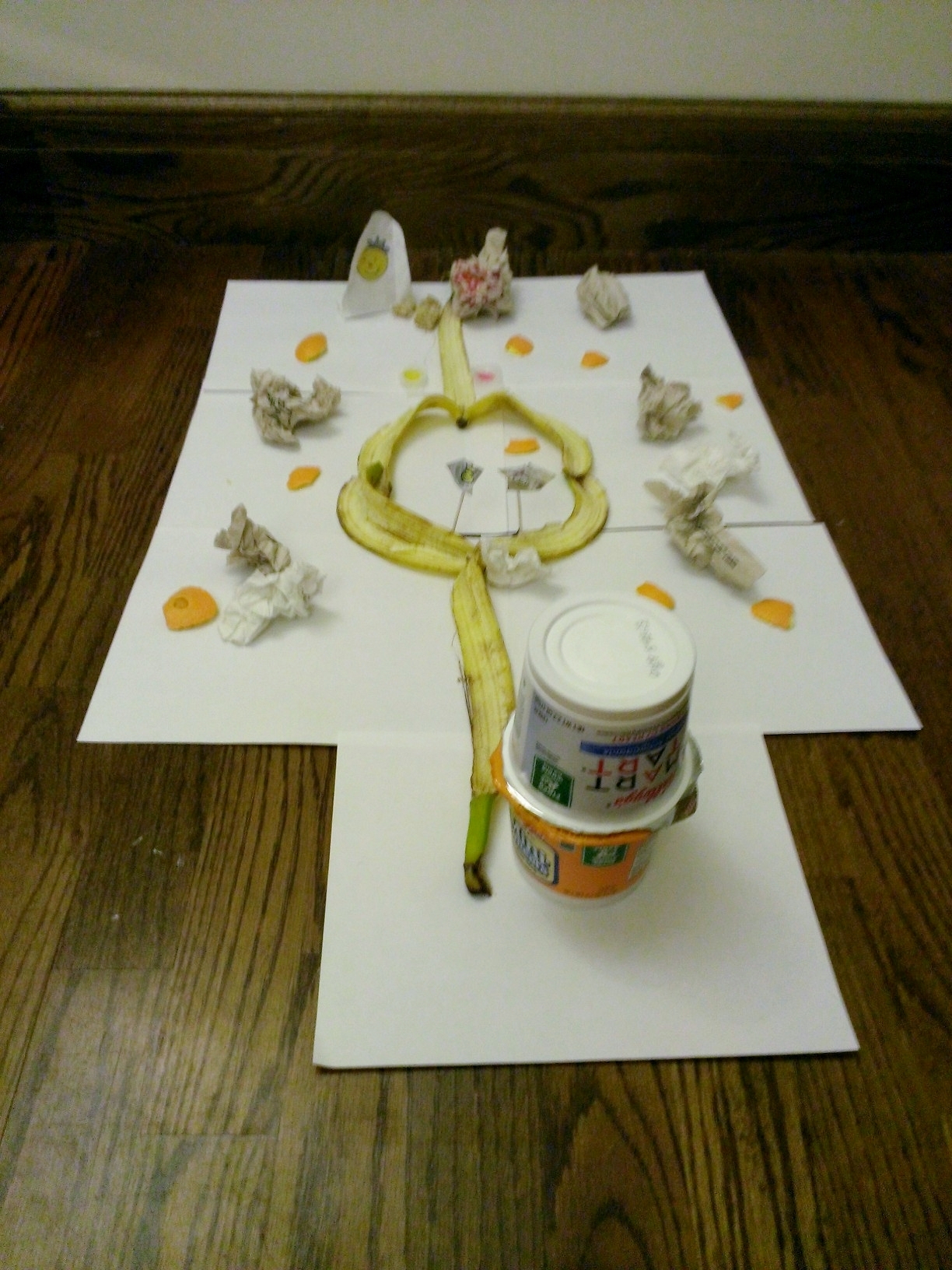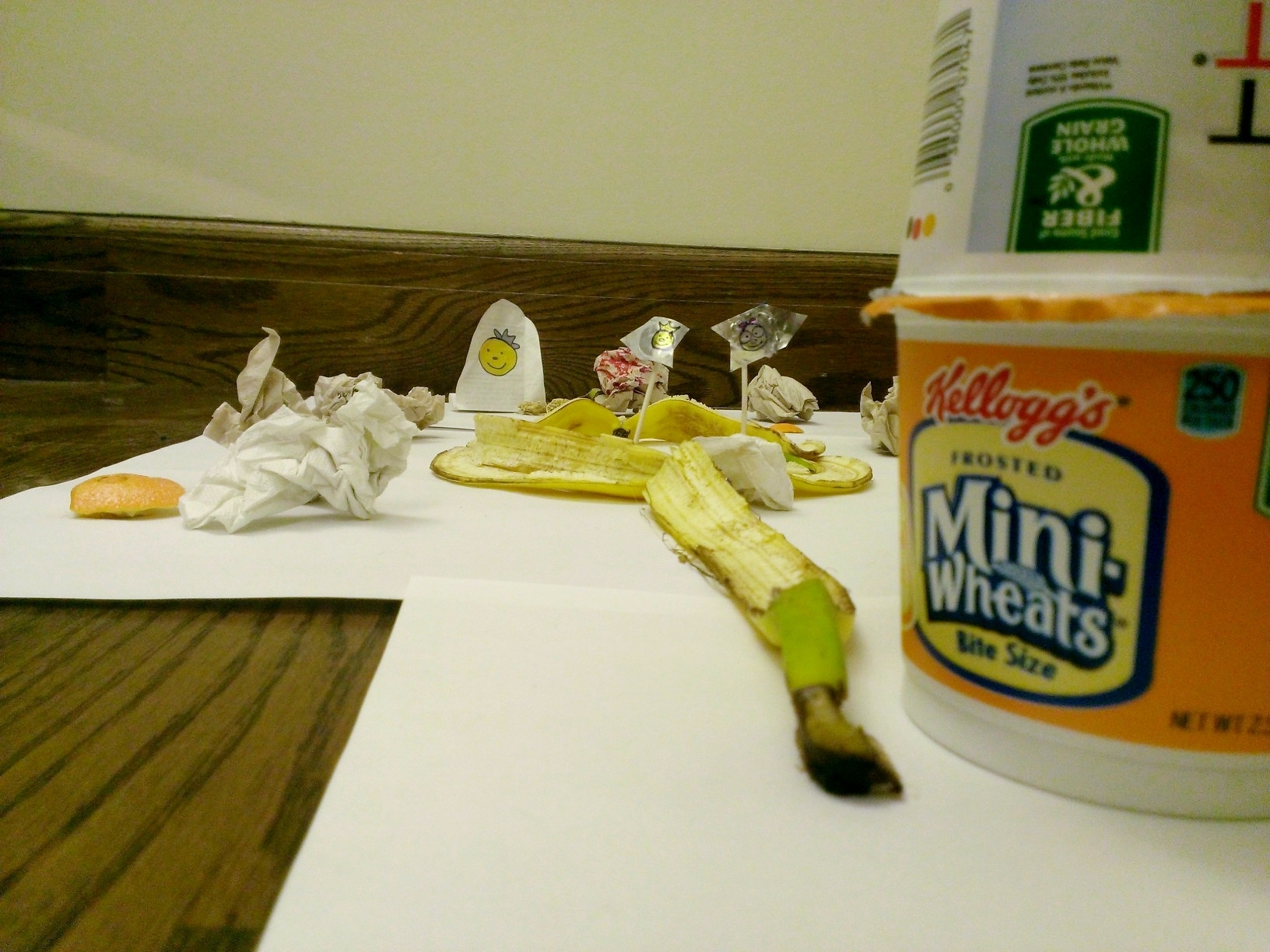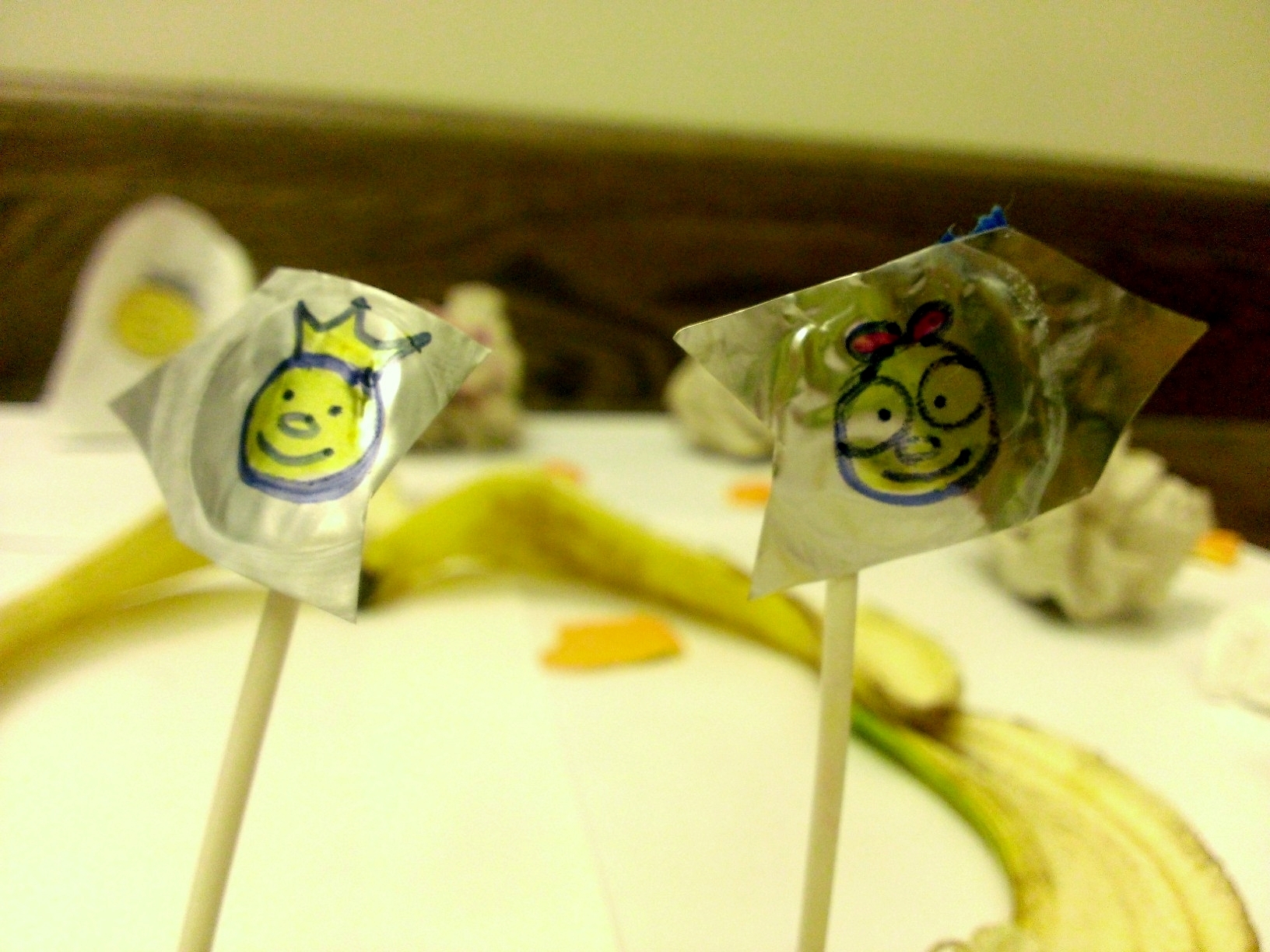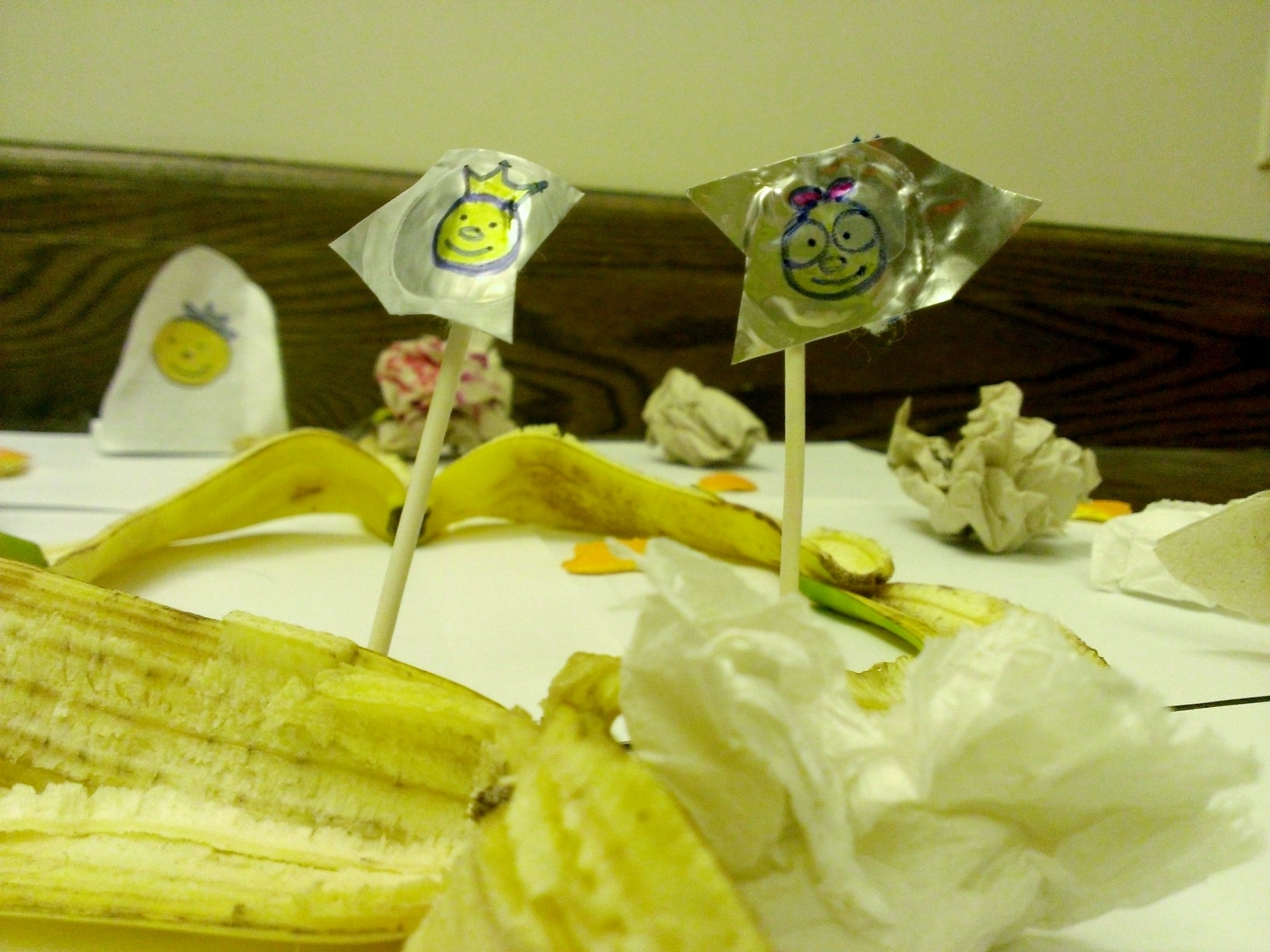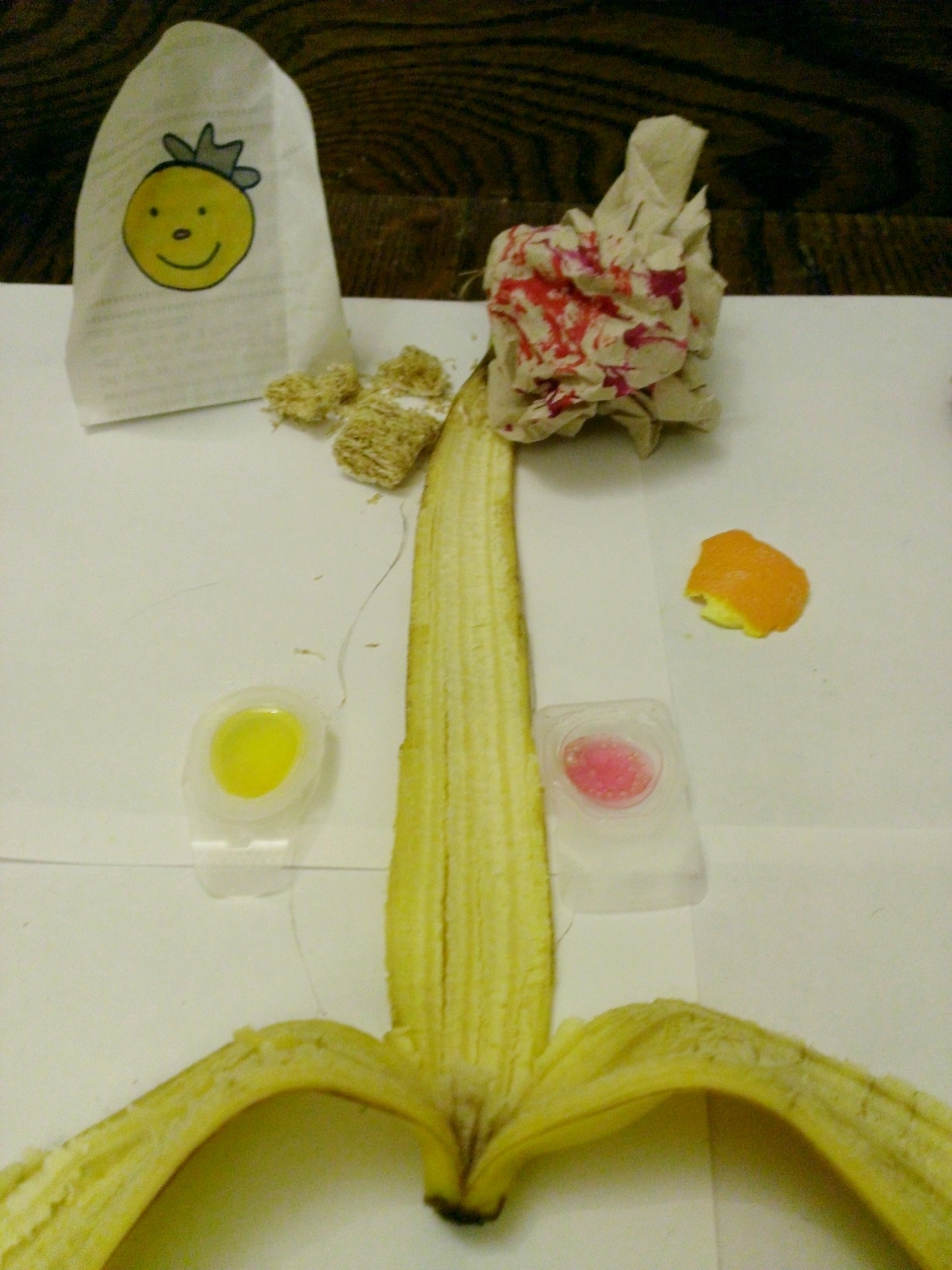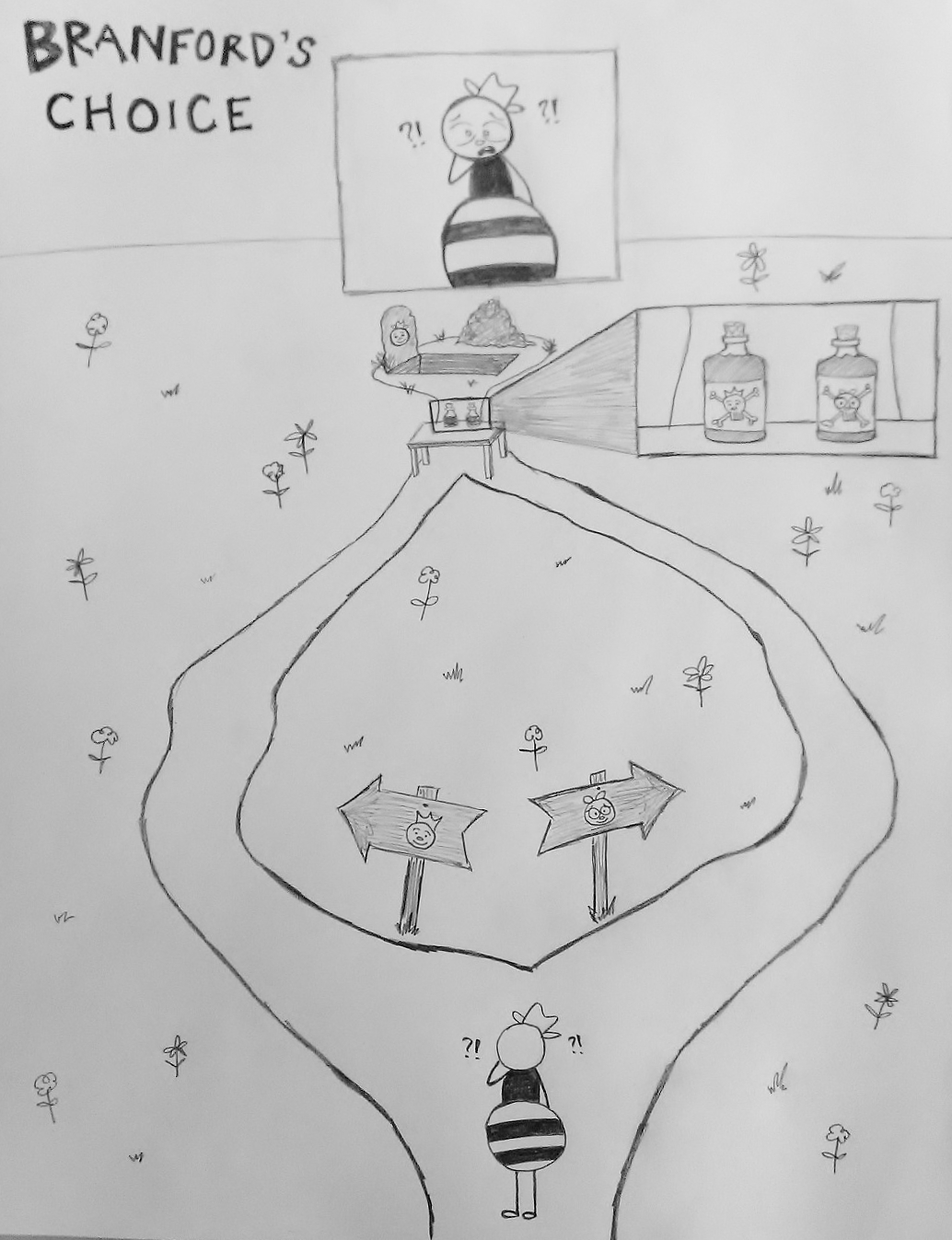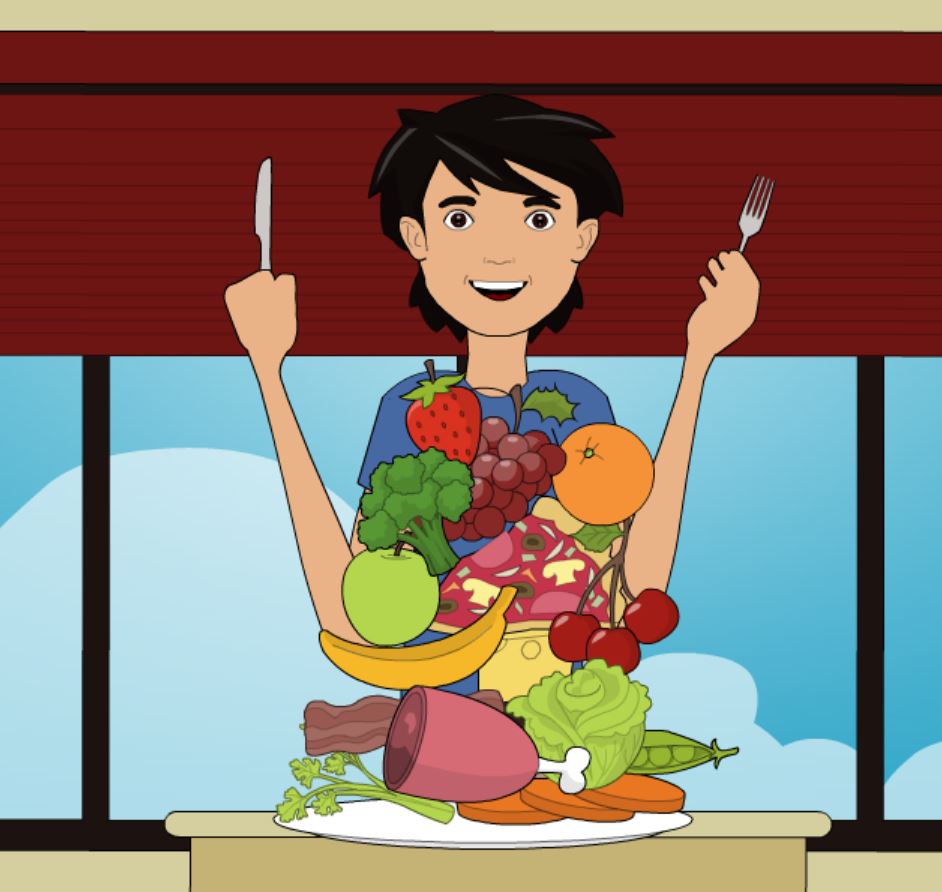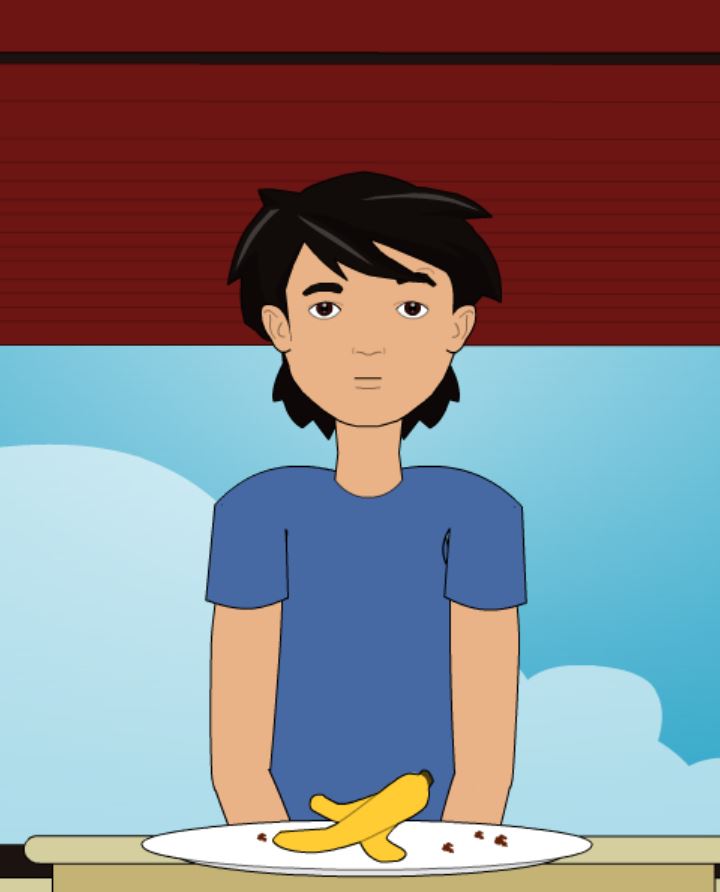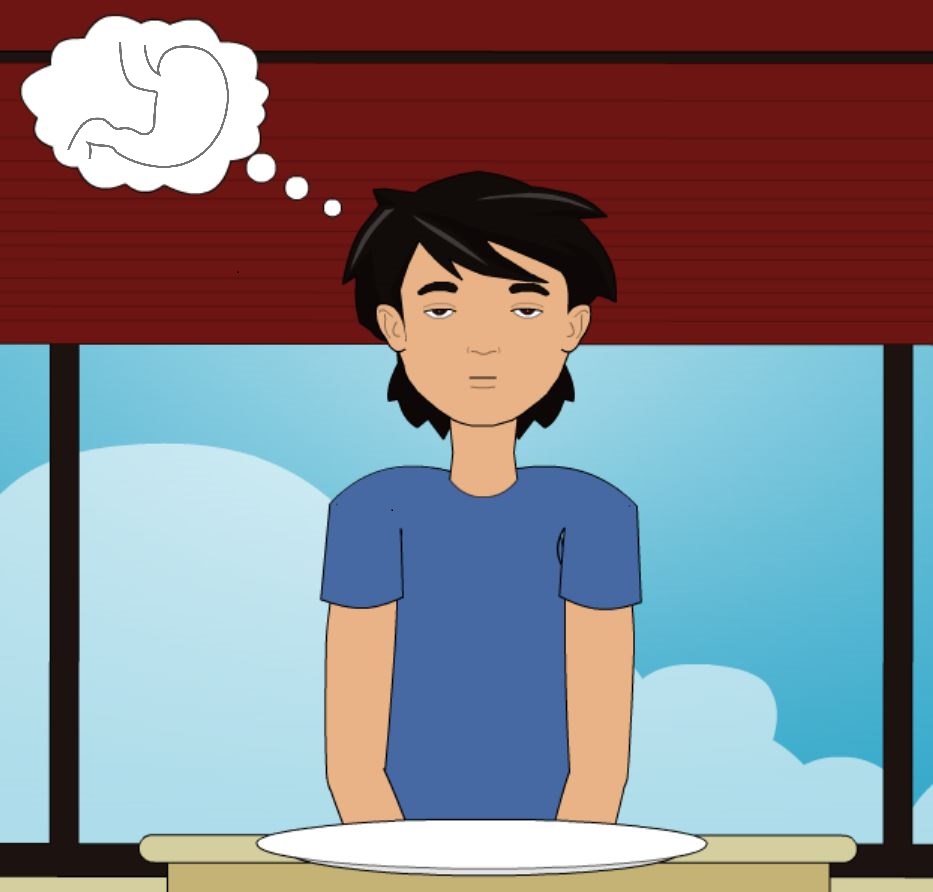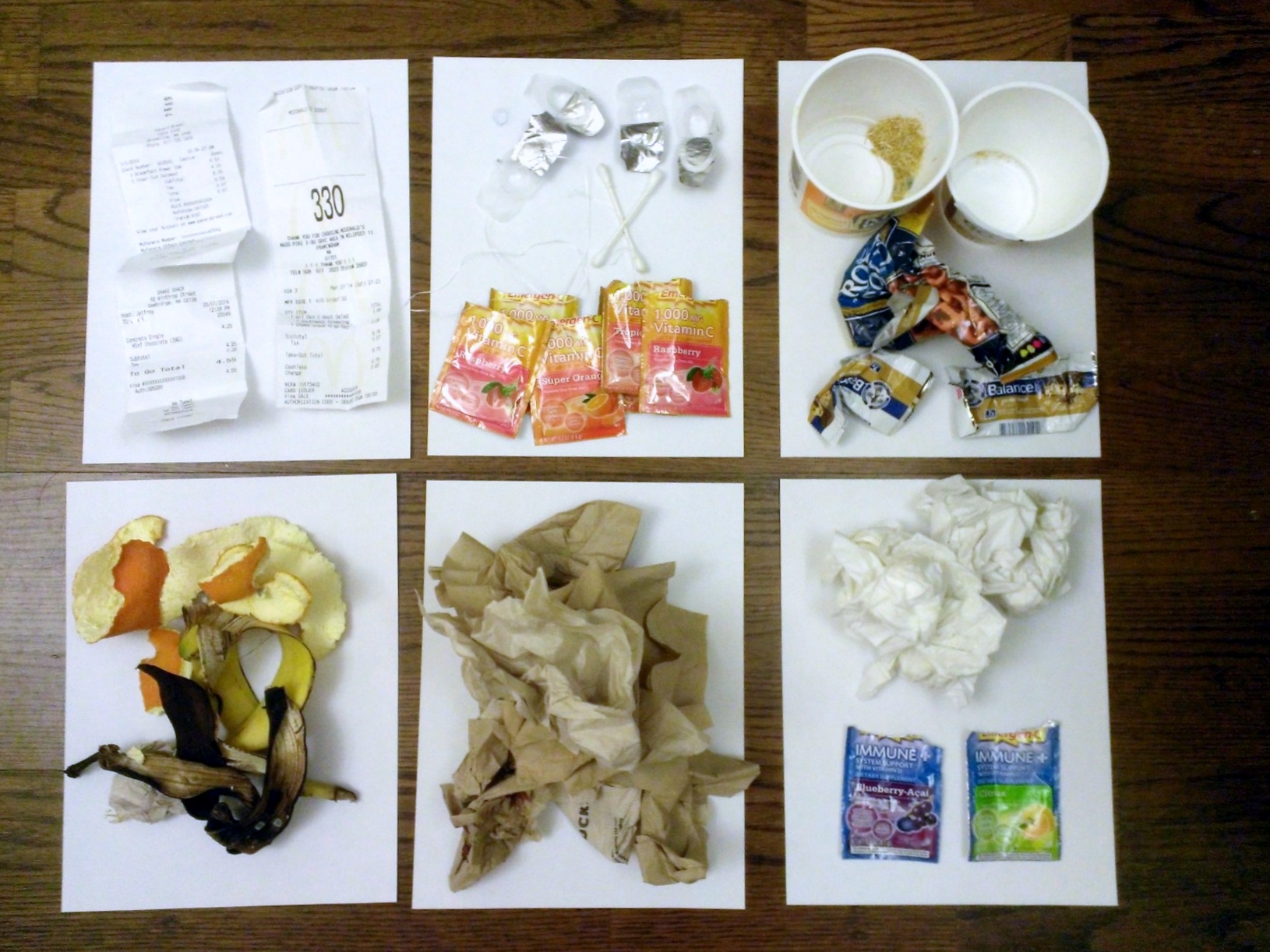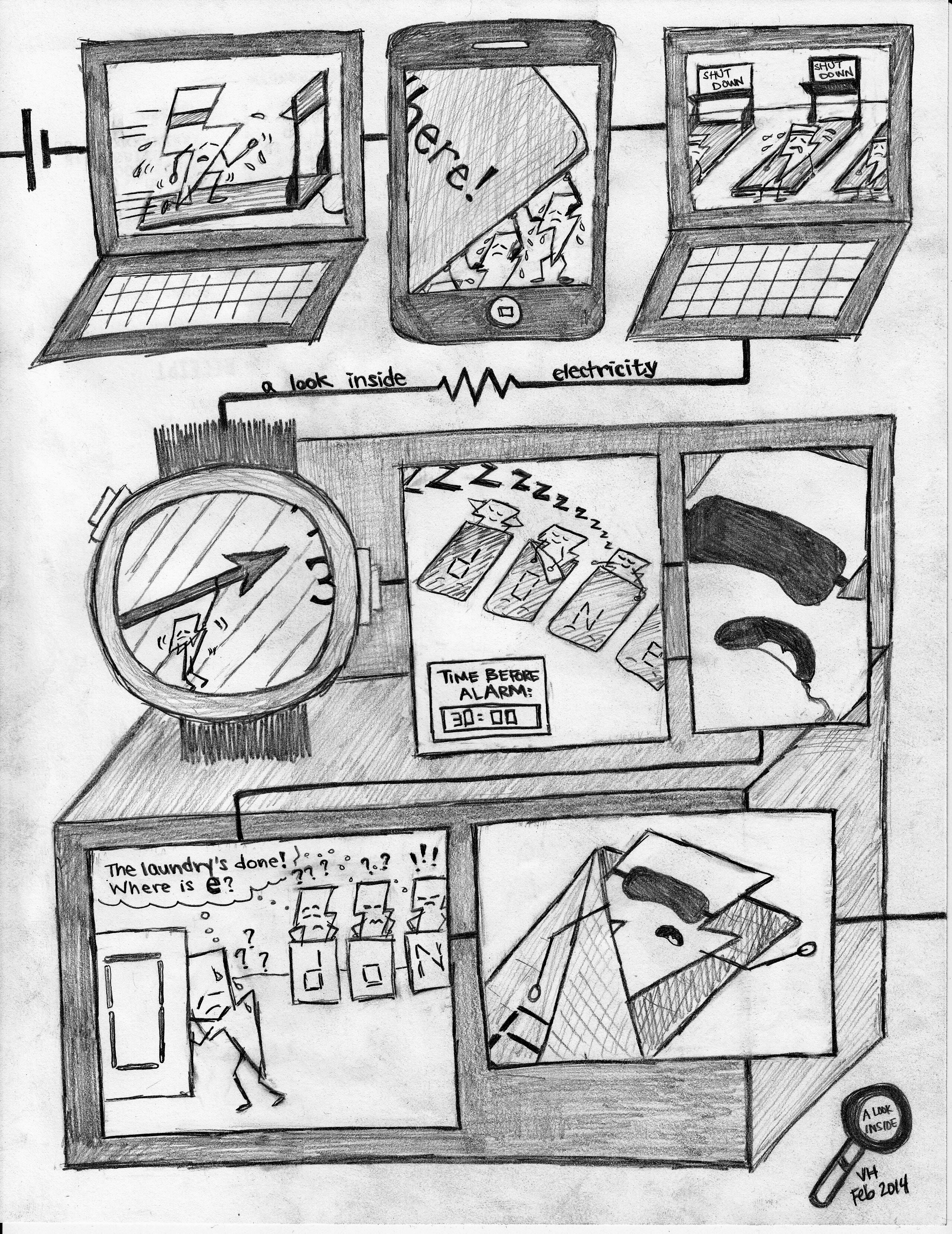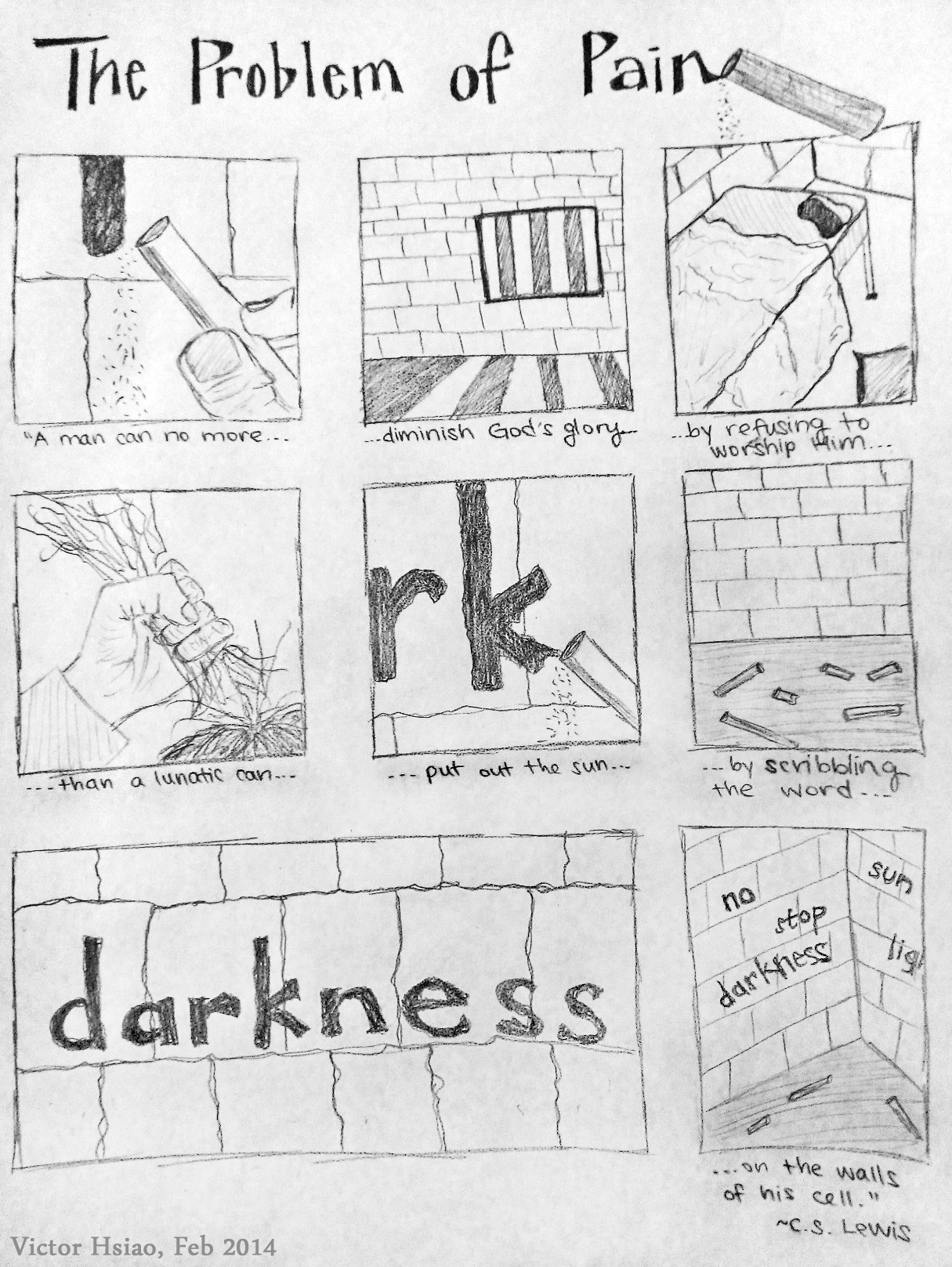For my final experiment, I chose to decompose both my 3rd and 5th experiments. In my 3rd experiment I took an inventory of a student’s trash can while in my 5th experiment I drew a visual proposal for my final paper. In this proposal, I hoped to depict the fatalistic message that I believe is conveyed through the story of Branford the Bee in Chris Ware’s Building Stories. For those familiar with the two previous experiments, you will notice that the pieces of trash that I’ve used for this final experiment are limited to those found in my 3rd experiment (with the exception of a few small pieces of tape to help hold together the signs, and the markers to draw the signs and make the bloody napkin, all of which are shown below). The overall “map” also resembles the one drawn in my visual proposal. The “trash” for this experiment was not collected from the same student’s trash can. It was either bought (the Emergen-C and cereal), acquired from the dining hall (bananas and orange), or found in my own personal trash (the napkins, contacts, and receipt).
Some of the parallels include:
– Banana = pathway
– Emergen-C + water + contacts case = poison (Emergen-C and the poison are both chemicals! And the colors of the “poisons” match the headwear of Betty and the queen.)
– Cereal boxes = Branford (his body is quite large)
– Napkins and oranges = flowers (the oranges were also very fragrant)
– Contacts “lid” + Q-tips = signs
– Receipt = tombstone
– Cereal = dead Branford (some of the contents of the cereal box poured out…)
– “Bloody” napkin = more of dead Branford (I thought the suspicious red, potentially bloody, napkin from Experiment 3 nicely fit into the fatalistic idea so I colored a napkin red to resemble the original bloody napkin from Experiment 3)
In this final experiment I chose to reinvent two of my previous experiments by combining them in order to bring out some of the new developments in my final paper ideas since my visual proposal. In my final paper I hope to highlight how Branford’s story highlights the story and beauty of an unrecognized, quotidian life. As I explained in my post for Experiment 3, an individual’s trash reveals much about an individual’s life. Trash reveals more about an individual than he or she sometimes wants to or even can convey. We similarly gain a greater understanding of the protagonist through her story of Branford. I hope to argue in my paper that, like Branford, the protagonist feels trapped between two paths in her life (loving her family or turning towards her own passions, in the protagonist’s case) and as someone who is ordinary and unappreciated (like Branford in the hive). Although we see some of the protagonist’s conflict of interests in the rest of Building Stories, I believe that Branford helps articulate this idea that ordinary people have interesting stories and also helps to highlight the protagonist’s story. Furthermore, Branford’s story highlights how the protagonist tries to reaffirm herself of her self-worth and the importance of her actions. As a piece of supporting evidence in Branford’s story, I will cite the reference to Branford as the bacterium that is helping with compost and the growth of new flowers. Similarly, I believe that the protagonist believes that her actions have great worth and will bring new life (in her daughter) even after she dies. I try to illustrate this second idea of new growth through the banana peels. The peels represent the paths of Branford (or the protagonist) and although the two paths ultimately lead to the same dark ending, there is hope because these paths will (literally, as the peels compost away after being thrown away) lead to new growth.
Thanks for reading!

